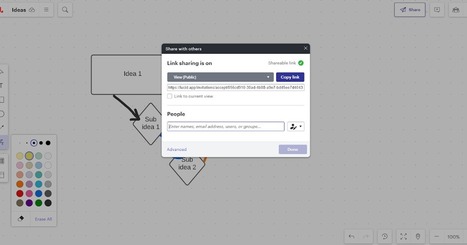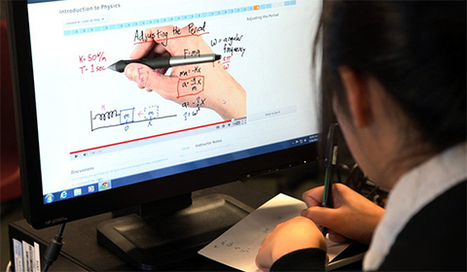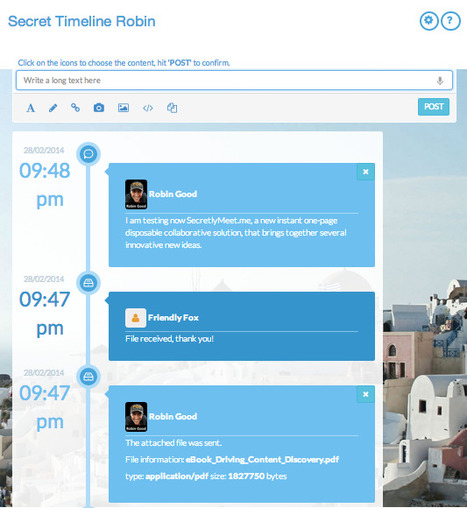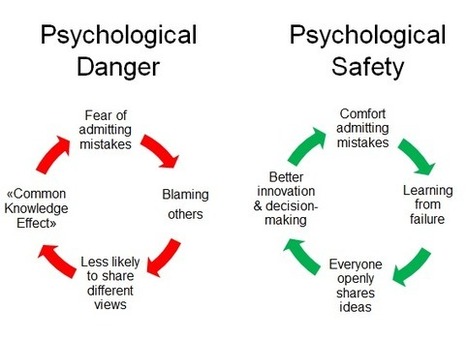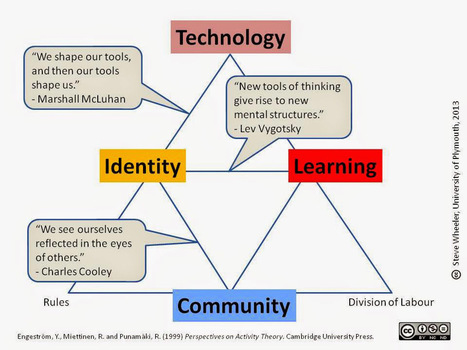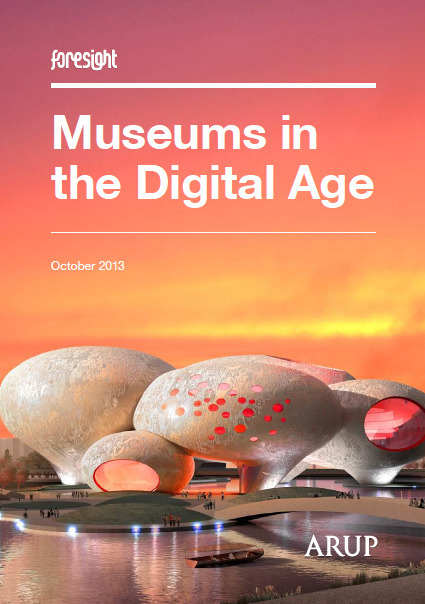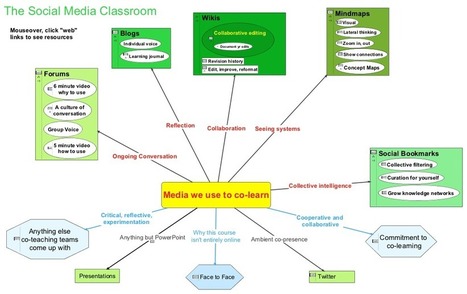
|
Rescooped by Alazne González from iGeneration - 21st Century Education (Pedagogy & Digital Innovation) |
Get Started for FREE
Sign up with Facebook Sign up with X
I don't have a Facebook or a X account


 Your new post is loading... Your new post is loading...
 Your new post is loading... Your new post is loading...
No comment yet.
Sign up to comment

Gust MEES's curator insight,
August 26, 2015 6:24 AM
Research demonstrates that a sense of social connection can improve learning. In fact, activities that bring students together — like peer tutoring and cooperative learning — have shown a marked increase of up to 75% greater performance on assessments. Teachers who support student-centered learning in this way often make a bigger impact on students’ lives and education than teachers who remain aloof or apart from their students.

Empowerment's curator insight,
February 23, 2015 6:50 AM
There is a strong trend of discovery in learning organizations

Willem Kuypers's curator insight,
February 24, 2015 3:34 PM
C'est toujours intéressant de suivre l'Open University dans ses opinions sur la formation.

Robin Good's curator insight,
February 28, 2014 3:57 PM
SecretlyMeet is a web app which allows you to instantly publish a web one-pager in which to share, post and add any type of content you want. From text, to images, video clips, freehand drawings, embed codes, to any type of file you can post and share anything you want. You can even post text by speaking into the page. The page you create lives only until you keep your browser open on it. When you and the other party close the browser the page disappears forever. To use it you just select a theme, click Start and you re provided immediately with a unique link to your page, that you can share with someone else. Unless someone else joins you on the page, you cannot start editing it. With SecretlyMeet you have an instant publishing tool that you can use to exchange and collaborate with someone else privately as if it were a multimedia page on which to share any content desired. The key benefit is that SecretelyMeetMe requires basically zero setup and configuration and you are ready to publish, collaborate and share immediately and leaves no trace of what you have been sharing behind you. A live text chat window is also available on any SecretlyMeetMe to exchange in real-time with anyone else having access to it. Free to use. Try it out now: https://secretlymeet.me/ 
Tom Short's curator insight,
March 5, 2014 2:10 PM
Going to be thinking about what I could use this for...seems like it could be a great bridge between posting stuff up on an internal, persistent social web and the real time feed from a WebEx/GoToMeeting interface.

Sergey Gitinsky's curator insight,
December 17, 2012 3:55 AM
Согласен с господином Рейнгольдом о том, что наступает эра соработничества. Инструменты соработничеста, такие как, например, подборки, будут востребованы все больше и больше. |

Gust MEES's curator insight,
April 16, 2016 10:24 AM
Cornell professor Kathleen O’Connor, who coaches teams on effective collaboration, says that when psychological safety is absent from the workplace, teams lose the individual knowledge and expertise each member brings to the table and begin to experience what is known as the Common Knowledge Effect.
Agra hotal's curator insight,
April 16, 2016 11:56 AM
Book Now Hotel with cheap rate near Tajmahal on http://www.hotelatagra.com

Ian Berry's curator insight,
April 16, 2016 8:32 PM
The danger model is the past, the safety model the present and future
Jaydin Nies's curator insight,
September 19, 2016 2:47 PM
Many times when we learn we use many tools. They may be our minds or they may be outside objects. This is how we put them together and use it for the better. 
Prudence Matsega's curator insight,
January 7, 2019 4:18 PM
The Activity theory helps in understanding other factors that will have an impact on the a students's/ learner's thought pattern. Activity Theory gives clarity as to who is doing what? How are they doing it? Finally why are they doing it?

Gust MEES's curator insight,
November 27, 2014 7:37 AM
MAKING COMPETENCE-BASED EDUCATION A REALITY IN SCHOOLS ACROSS EUROPE

Mark Treadwell's curator insight,
November 29, 2014 2:03 PM
… and finally some fresh thinking from Europe! Great MT

Jennifer Moss's curator insight,
November 8, 2013 6:47 PM
This is like the 'Horizon Report' for museums. 
Erica Bilder's curator insight,
November 15, 2013 7:11 AM
I have nothing to add to Robin Good's terrific insights: Robin Good's insight:
Picture these scenarios: The Freud Museum, in the spirit of its namesake, becomes a provider of mental retreat and therapy (I wonder if the docents will be licensed psychoanalysis?) These, according to the 40-page report “Museums in a Digital Age” from Arups, may actually be some of the likely new profiles of prestigious museums 25 years from now.
The report projects that:
"...future museums will see personalised content, new levels of sustainability and a visitor experience extended beyond present expectations of time and space." A rising desire among audiences to shape their own cultural experiences (“Collaborative Curation”) The opportunity for museum to become “curators of experiences” that extend beyond the boundaries of traditional exhibits or programs, or beyond the walls of the museum itself.
Source: http://futureofmuseums.blogspot.it/2013/11/museums-in-future-view-from-across-pond.html ; The idea of "collaborative curation" of museum collections by the actual users-visitors, is particularly fascinating. "Just as current consumer trends shift towards collaborative consumption, in the future, museums may employ new patterns of collaborative curation,allowing for individually curated experiences and giving the public greater control over both content and experience.Increased visitor participation will allow people themselves to reinvent the museum experience, enabling content that can adapt to the preferences of users in real-time."
My comment: If you are a curator and are interested in exploring and understanding what the future of large collections and museums may look like and which forces are going to be driving such changes, this is a good report to read.
Insightful. Inspiring 8/10
PDF: http://www.arup.com/~/media/Files/PDF/Publications/Research_and_whitepapers/2013_Arup_FRI_MuseumsintheDigitalAge_final_web.ashx
|


